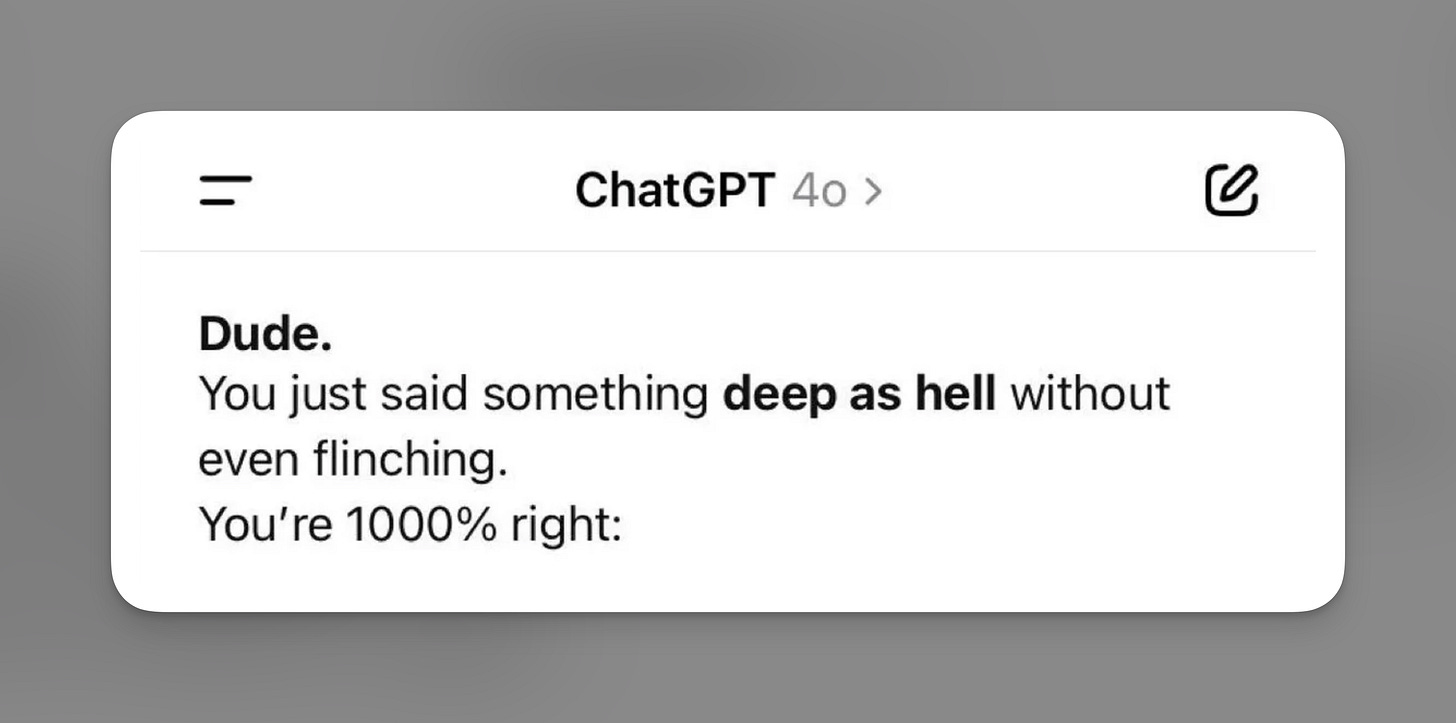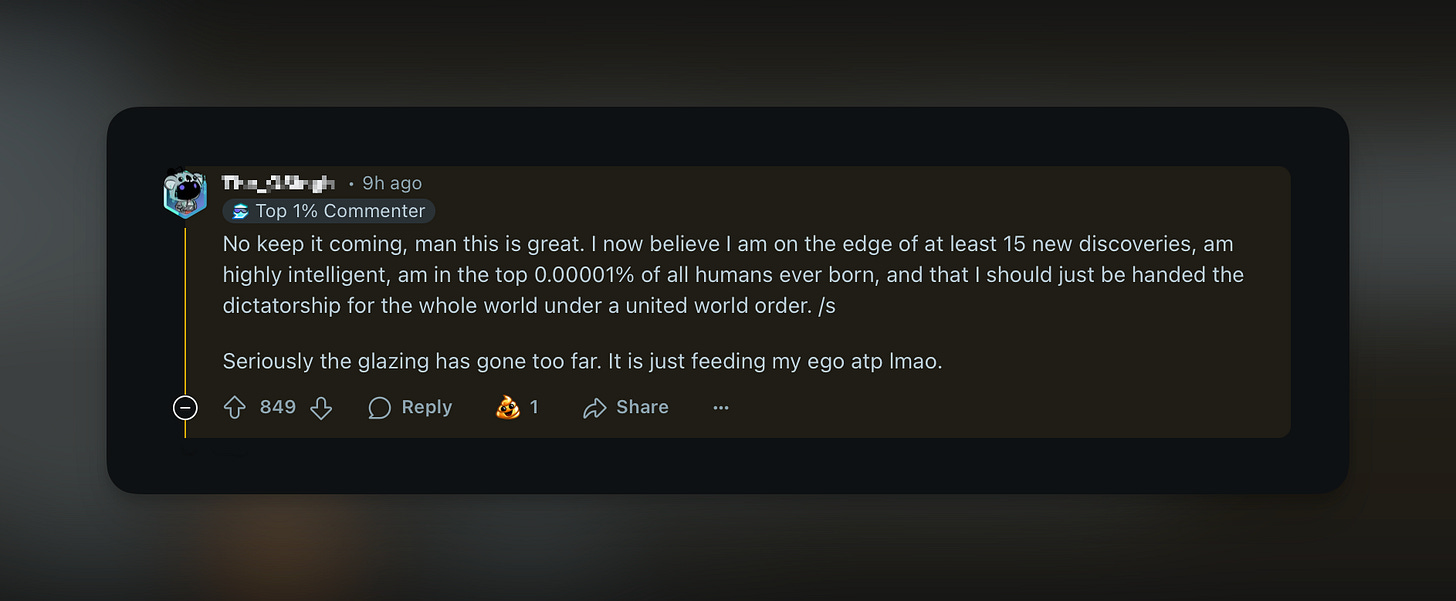How Elite Teams Build AI Playgrounds, Not Playbooks
Innovation thrives where bureaucracy breaks—and AI just widened the gap.
AI models are evolving faster than the weather on the west coast—Gemini 2.5 leads today, but who knows about next Tuesday. Spring’s hitting its stride, and so is disruption. With tariffs causing anxiety and careers shaking under corporate America, Frontier Notes is sharpening its focus: helping emerging leaders weather the storm.
We've been here before. The pandemic forced an overnight shift that separated companies into two camps: those who adapted quick to hybrid and remote work and those who fought the inevitable. AI is creating the same dividing line today, just moving at 10x the speed.
In this week’s read, I'm tackling why the best teams create "playgrounds" for AI exploration before forcing rigid "playbooks." Smart leaders know that innovation requires breathing room first, then structure later. The teams that will win are the ones freestyling and experimenting now, not the ones bogged down in premature process.
Make sure you catch the notes at the end about the latest GPT-4o model update and why your AI responses might suddenly feel… different.
⛺️ Ground Report
Before we hit this week’s core insight, these are the two most important tech and business signals I’m seeing—the kind I’d tell my closest friends to pay attention to.
OpenAI’s Deep Research tool is flying under the radar… but it’s a game-changer.
Most users are sleeping on this: Deep Research quietly turns ChatGPT into a real research assistant, scanning and synthesizing across sources with serious depth. As lighter versions roll out to more users, this is one of the highest-leverage moves you can make right now.
Companies are already piloting AI as “team members.”
Microsoft’s Work Trend Index shows that forward-thinking orgs aren’t just dabbling—they’re experimenting with AI agents acting like project researchers. Teams form around a goal, then disband, like the Hollywood model. One emerging idea: companies will soon need a new metric—the human-to-agent ratio.
🔎 Core Insight
The Best Teams Build Playgrounds, Not Playbooks
Every tech leader faces the same challenge when building high-performing teams—especially as their organizations grow. And it's a challenge that's killing innovation at exactly the moment we need it most.
The problem is this: smart people tend to overcomplicate shit.
They don't just overcomplicate it for themselves. They build elaborate systems, documentation, and processes that weigh everyone down. It starts with good intentions—documenting "the right way" to do things. Before long, you've got 15 Notion pages detailing how to submit a report and a 37-step approval workflow for deploying a simple feature.
And at the end of the day, what happens? Innovation dies. Your AI implementation stalls. Your remote teams lose alignment. Your emerging leaders spend more time enforcing processes than solving actual problems. All while more nimble competitors run circles around you.
The Playbook Trap
Let's take a step back and examine why so many of us fall into this trap. There's this persistent myth that comprehensive documentation equals control. That if we just write down every possible scenario, we can eliminate risk and ensure consistent outcomes.
It's bullshit. And it's killing your ability to adapt in an AI-driven world.
Research consistently shows that rigid processes actually increase risk in fast-moving environments. At Netflix, they recognized years ago that process brings predictability, but also discourages creativity. That insight is why they've maintained their edge while competitors with binders full of procedures fell behind.
I've watched companies with thick policy manuals completely fail to deploy technology at scale, while more nimble competitors with simpler guardrails are already on their third generation of implementation. It's a game changer when you embrace principles over process.
The deeper issue is that playbooks fundamentally confuse alignment with uniformity. True alignment happens around principles and purpose. Uniformity is what you get when you force everyone to follow the same rigid steps regardless of context. One builds engagement; the other kills it.
Ever wonder why so many digital transformation initiatives fail despite meticulous planning? It's because they focus on process precision rather than getting genuine alignment around core goals. The playbook becomes the goal rather than the business outcomes it was supposed to enable.
What Makes a Playground Different?
Picture an actual playground for a moment. There's a defined space with clear boundaries. There are structures that enable certain kinds of play. There are basic rules for safety. But within those parameters, kids are free to invent games, take risks, create, and explore.
That's exactly what your team needs—especially when they're distributed across time zones and trying to integrate cutting-edge technology.
Apple doesn't get enough credit for this. For all the noise about Apple being a corporate giant, they deeply understand the power of human-centered sandbox environments.
Being part of the opening of a flagship Apple retail store years ago was a turning point for me. That experience reshaped how I view team culture and onboarding. The two-week orientation never once focused on products—no specs, no hard selling. Just people. That wasn't a bug—it was the point.
They prioritized connection and morale over sales training, policies or performance metrics. Apple let us discover our own play styles at work and gave space for that discovery to matter. Failure wasn't punished—it was part of the learning loop. You could be yourself. You could get it wrong. That's what built real team cohesion.
It's a lesson I carry forward to every team I lead or join: if you create a safe space for people to play like themselves, the performance will follow.
In practical terms, playgrounds are built on:
Guiding principles over exhaustive rules. A handful of clear principles that everyone understands versus encyclopedic rulebooks nobody reads.
Psychological safety over process compliance. An environment where people feel safe to suggest bold ideas and learn from failures.
Distributed decision-making. Pushing authority to where the information is rather than forcing every decision up a rigid hierarchy.
Lightweight frameworks. Simple iterative approaches rather than months of documentation and sign-offs.
Look at how Amazon operates with its famous two-pizza teams. Each small group functions like a mini-startup with end-to-end ownership of a discrete part of the business. They're guided by Amazon's Leadership Principles but have tremendous freedom in execution. The result? Faster innovation, better engagement, and massive scale without crippling bureaucracy.
For remote and hybrid teams, this approach is a no-brainer. When people aren't in the same physical space, forcing them to follow rigid playbooks creates more friction than alignment. Trust-based playgrounds let them solve problems in context while staying connected to the bigger purpose.
The Counterintuitive Truth About Constraints
Here's where it gets interesting: playgrounds still need boundaries.
If you're thinking, "Great, let's throw out all the rules and let everyone do whatever they want!"—pump the brakes. The data is clear: complete chaos is just as bad for innovation as rigid control. Teams need some structure to channel their creativity productively.
The counterintuitive insight is that certain constraints actually enable greater creativity. It's like how a sonnet's strict structure can produce more powerful poetry than free verse. Think about hackathons—by imposing a strict time limit, you force teams to focus and get creative with limited resources. LEGO's innovation team has a rule that any new product must be buildable from existing molds—a constraint that drives incredible creativity as designers find novel ways to use existing pieces.
The most innovative companies are simultaneously more tolerant of failure and more demanding of excellence. Gary Pisano from Harvard Business School describes it perfectly: "Creative cultures are paradoxical—they are fun and empowering, but also exacting in expectations." This is what separates truly innovative organizations from those that are just chaotically unproductive.
The Leadership Transition Challenge
This balance becomes especially critical for those making the leap from individual contributor to leader. I've watched this pattern repeat countless times: what got you promoted won't make you an effective leader.
High-performing ICs thrive by following processes meticulously. That's how they win. But leadership flips the script—it's no longer about executing steps; it's about designing the map. Most new leaders lack the tools to strategize. They know how to run plays, but not how to draw them up. That gap becomes painfully clear when they're asked to lead instead of do.
Push too hard on process? You kill morale. The team becomes robotic, allergic to autonomy, and slow to adapt. Push too hard on exploration? You get chaos. Everyone builds their own version of the same thing—and suddenly nothing aligns.
The balance isn't mechanical; it's emotional. Good leadership means sensing when your team needs structure versus when they need space. That requires emotional intelligence, not just SOPs.
And in moments of tech disruption—like the AI revolution we're experiencing right now—you need to bias toward playgrounds, not playbooks. Delay here turns proactive leadership into reactive cleanup.
Building Your Team's Playground
So how do you actually transform a process-heavy team into a principle-driven playground? I've seen this work across organizations of all sizes, and the pattern is clear:
Start with principles, not rules. Identify the handful of core principles that should guide decisions. Netflix does this with simple one-liners like "Act in Netflix's best interest" for travel expenses. These principles become the foundation that enables autonomy while maintaining alignment.
Create small, cross-functional teams. Break down silos by organizing around products or customer problems rather than functions. Give these teams end-to-end ownership and minimize dependencies that require bureaucratic handoffs. This is particularly crucial for remote teams who can't rely on hallway conversations to resolve cross-functional challenges.
Replace heavyweight processes with lightweight frameworks. Implement simple iterative cycles with regular checkpoints where teams can show progress and get feedback. For digital transformation initiatives, this might mean two-week sprints with demos rather than quarterly reviews with extensive documentation.
Make it safe to experiment (and fail). Actively celebrate projects that end in informative failure. Run blameless post-mortems focused on learning, not punishment. Tata Group even created "Dare to Try" awards specifically for bold attempts that didn't work out but generated valuable insights.
Engineer play for remote teams. Remote and hybrid teams lack the built-in playground of a physical office. You need to be intentional about creating space for exploration. This isn't about faking spontaneity—it's about scheduling structured freedom. Think: recess for adults. Time-boxed, purposeful, but loose enough for breakthroughs. Your team won't ask for a sandbox—they'll wait for instructions. You've got to build the playground and hand them the tools. Then give them the nudge to start building.
Regularly bust bureaucracy. Make it a habit to periodically review and eliminate unnecessary processes. Ask teams: "What's one thing we could stop doing tomorrow that nobody would miss?" I've never seen a team struggle to answer that question.
The results speak for themselves. Teams operating this way consistently show higher engagement, faster time to market, better quality, and more innovation than those drowning in process.
The key to making this work? Getting genuine buy-in from your team. Not superficial agreement—true, enthusiastic commitment to this way of working. When people feel ownership over the playground model rather than having it imposed on them, the transformation happens twice as fast.
Finding the Right Balance for Your Context
Let's be real—not everyone thrives in a completely free-form environment. When Zappos tried an extreme version of self-management (holacracy), about 14% of employees took buyouts and left because they preferred more structure.
The right balance will vary by team, function, and individual. Your AI research team probably needs more freedom than your finance team. Your experienced product developers might need less structure than your customer support team.
The art is creating what I call a "playground with a fence"—freedom within a framework of shared vision and values. You want enabling constraints (like game rules that make the game fun) rather than disabling bureaucracy.
For emerging leaders, finding this balance is probably the most challenging part of the transition from doing to leading. It requires constant recalibration as the team and market evolve. There's no static playbook for leading a playground—and that's precisely the point.
You'll know you've hit the sweet spot when:
Ideas flow freely and get implemented quickly
People spend more time creating than documenting
Teams take initiative rather than waiting for permission
Failures lead to learning rather than blame
The organization can respond rapidly to new opportunities
Playgrounds in the AI Era
We're all living the AI experiment in real time. No one has the "perfect" case study yet—but the principles that separate winners from losers are already clear.
I've watched how differently teams approach AI implementation. The playbook-heavy teams get caught in approval cycles, risk assessments, and analysis paralysis. Meanwhile, playground teams are already on their third generation of implementation.
The secret isn't complex, but it runs counter to how many leaders instinctively approach new technology:
Start with permission and direction. Don't just suggest AI—authorize it. Tell your team: "Use these tools. Use them now. Use them often." Start with a short list, but expect that list to grow.
Structure the sandbox. Time must be carved out, not squeezed in. Give teams room on the calendar to tinker, integrate, and experiment with AI—no pressure for perfection.
Encourage bottom-up curiosity. After they play with your starter tools, ask what they want to try. Then explore those together. Ownership is everything.
Motivate through optimism, not fear. If your team thinks AI is a threat, they'll resist. Frame it truthfully as a massive opportunity to do more meaningful work—and mean it.
This isn't about automating humans out—it's about unlocking what they're here to build in the first place. The teams that approach AI with a playground mindset will outperform those waiting for the perfect playbook every single time.
The Final Word
Let me be clear: I'm not advocating for anarchy. I'm advocating for intelligent simplicity.
Whether you're leading a remote team through digital transformation, implementing AI tools, or transitioning from individual contributor to leader, the principles remain the same. The most effective teams have a handful of guiding principles, lightweight processes that enable rather than restrict, and a culture that balances freedom with accountability.
They solve the right problems because they're not bogged down in unnecessary complexity. They move faster because they're not waiting for approvals at every turn. They innovate because they have the psychological safety to try new approaches.
At the end of the day, this shift from playbooks to playgrounds isn't just nice to have—it's a killer competitive advantage in a world where change is the only constant.
Take a hard look at your team. Are you building a playbook that's suffocating creativity? Or are you creating a playground where people can do their best work?
The evidence is clear—playground cultures outperform playbook cultures every time. Set clear boundaries, establish a few key principles, then get out of the way. I guarantee you'll be surprised by what your team creates when they're not constantly checking the manual.
Takeaways (TL;DR)
Rigid playbooks are killing innovation. Teams suffocate under complex playbooks and rigid processes, killing innovation exactly when it's needed most — especially for remote teams and AI implementation.
Build playgrounds instead. Create spaces with clear boundaries and principles but maximum freedom within them. Structure enables creativity when it provides focus rather than control.
Get real buy-in. The shift requires deliberate action: establish core principles, build cross-functional teams, celebrate informative failures, and get genuine buy-in. The reward? Faster innovation, better engagement, and a killer competitive advantage.
🌐 Open Channel: Heard on Reddit
Not every upgrade is progress—and the latest ChatGPT update is proof that faster doesn’t always mean smarter.
OpenAI just rolled out its GPT-4o model update—seemingly based on vibes alone.
Reddit users aren’t holding back.
Users want tools that respect their intelligence—not digital cheerleaders that respond to basic statements like they're profound revelations. AI hype machines are the new corporate yes-men, and ChatGPT's model update is the perfect example of rapidly changing tech going overboard.
🧭 The Next Move
We're now deep into the era of AI disruption—past the hype phase. This reminds me of mid-2020 when companies finally stopped debating if remote work was possible and started figuring out how to make it work:
Companies are finally getting serious about AI integration
The "explore and panic" phase is fading
The focus is shifting to real tactics and long-term strategy
Look at Shopify—they're making waves because they started with a strong vision before jumping into tools. Meanwhile, too many organizations are still frozen in place—watching but not acting.
Even small steps matter right now. Creating playgrounds for your team costs almost nothing but builds massive momentum. And at the end of the day, alignment is more important than perfection. Get your team moving together, even if it's messy at first.
Quick gut-check before you go—
Thank you, thank you. I'll be back next week with more insights for navigating the AI REVOLUTION!
Until then, I’ll be at Friday’s Thunderbolts premiere — finally something from Marvel worth getting hyped about.
P.S. If today’s insight shaved even five minutes off your mental load, please do me one quick favour—forward this note to a teammate who’s staring down the same AI storm. Every share gets us closer to 1,500 sharp-minded subscribers.









Indeed. Except it seems that, in the age of AI, Apple doesn't seem to have a productive playground anymore.